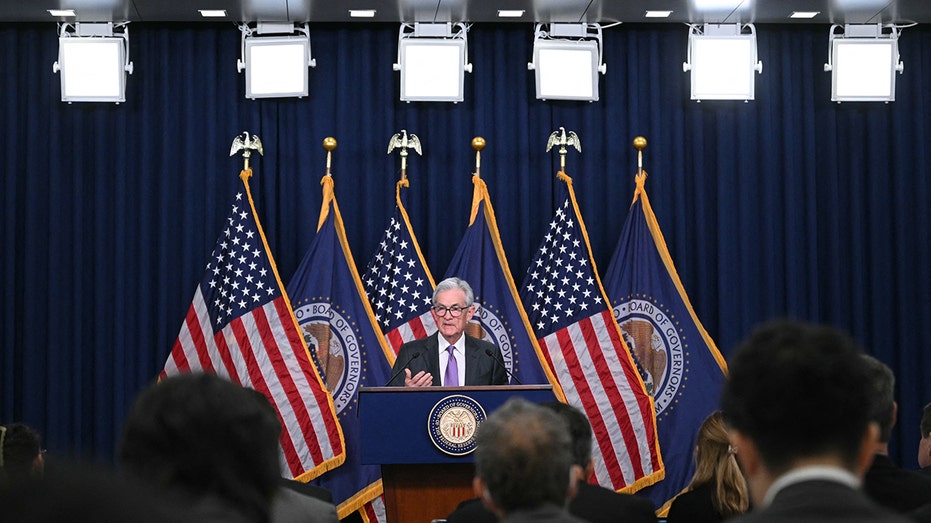Higher interest rates could cost US companies $380B in 'slowly unfolding crisis'
The US economy is starting to experience the 'painful effects' of higher interest rates
Interest rates could be much higher for the next decade, expert says
Main Street Asset Management CIO Erin Gibbs and QI Research CEO Danielle DiMartino Booth discuss whether the Fed will hike interest rates this year on 'Making Money.'
Companies across the U.S. are barreling toward a refinancing cliff that could cost them billions in the new era of high interest rates, setting up a "slowly unfolding crisis."
New research published by Baringa, a global consultancy firm, found that companies that refinance between this year and 2030 will pay an additional $381 billion in interest costs due to elevated borrowing rates. This amounts to the largest single increase in debt-related costs and the highest cumulative interest payment total ever faced by U.S. companies.
The largest expense is expected to occur in 2024, with more than $3 trillion in loans and bonds set to mature this year. Companies refinancing that debt will likely pay $76 billion more in interest this year than they did under lower interest rates, according to Baringa, which analyzed FactSet data.
"It’s tempting to look at plateauing interest rates and conclude that the worst is behind us, but that’s simply not true," said Cindra Maharaj, partner in Baringa's financial services practice. "In fact, U.S. businesses and the wider economy are just beginning to experience the painful effects of a serious hangover from the rapid escalation in interest rates that will last for several years to come."
FED'S KASHKARI WANTS TO SEE 'MANY MORE MONTHS' OF GOOD INFLATION DATA BEFORE CUTTING RATES

A "Wall Street" sign in New York, on Jan. 27, 2023. (John Taggart/Bloomberg via Getty Images / Getty Images)
The Federal Reserve raised interest rates sharply in 2022 and 2023 to the highest level since 2001 in a bid to slow the economy and cool inflation. Officials are now grappling with when they should take their foot off the brake amid signs that progress on inflation is slowing.
A number of Fed policymakers have signaled in recent weeks that they will hold rates at elevated levels longer than previously expected until they are certain that high inflation is conquered. Most investors now expect the Fed to begin cutting rates in September or November and are penciling in just one or two reductions this year — a dramatic shift from the start of the year, when they anticipated six rate cuts beginning as soon as March.
The consequences of higher rates are "significant," according to Baringa.
THE SILVER LINING OF HIGHER INTEREST RATES: SAVINGS ACCOUNT RATES
Default rates are already on the rise. High-yield default rates climbed to 3.04% at the end of the first quarter, up from 2.94% at the end of 2023, according to Fitch Ratings. By comparison, in 2022, the default rate was just 1.3%.
"U.S. businesses and the wider economy are just beginning to experience the painful effects of a serious hangover from the rapid escalation in interest rates that will last for several years to come."
"We're already seeing default rates rise. They're above where they were before COVID, before the energy crisis," Nick Forrest, a partner at Baringa, told FOX Business. "But we don't see a quick spike because this is not a trigger, like the beginning of COVID or the Ukraine war. So it'll be slow moving. I see a gradual increase as this high-interest debt cost moves its way through the system."
Nearly half of top financial executives — about 47% — said their companies are "not fully prepared" with a financial plan to cover the extra cost of financing, according to a March survey of 251 CFOs, financial directors and treasurers conducted by Baringa. Another 41% said that while they have the liquidity and cash reserves required to survive a high-interest rate environment, they thought that their company would struggle to survive. About 2.4% of respondents said higher interest rates and more expensive debt is a "potentially disastrous" situation.

Federal Reserve Chair Jerome Powell holds a press conference at the end of the two-day Federal Open Market Committee meeting at the Federal Reserve in Washington, D.C., on March 20. (Mandel Ngan/ AFP via Getty Images / Getty Images)
"In a worst-case scenario, the new higher-interest rate environment might trigger a decaffeinated repeat of the 2008 financial crisis: a credit crunch, but at a slower pace," Forrest said. "Financial services need to be prepared."
Unlike the 2008 crisis — which was a squeeze on the availability of credit and left the financial system unable to provide the necessary credit demanded by the economy — companies will now have to wean themselves off of years of cheap debt, or find ways of refinancing or reducing their current debt levels.
GET FOX BUSINESS ON THE GO BY CLICKING HERE
There is also a potential for broader economic fallout from companies taking on more expensive debt. About 22% of respondents said they will raise prices in order to offset the higher costs of refinancing their debt, which could push inflation higher, while about 17% said they would squeeze their margins and 14% said they would institute a hiring freeze.
Another 14% said they would suffer a liquidity crisis that could potentially end the business.





















